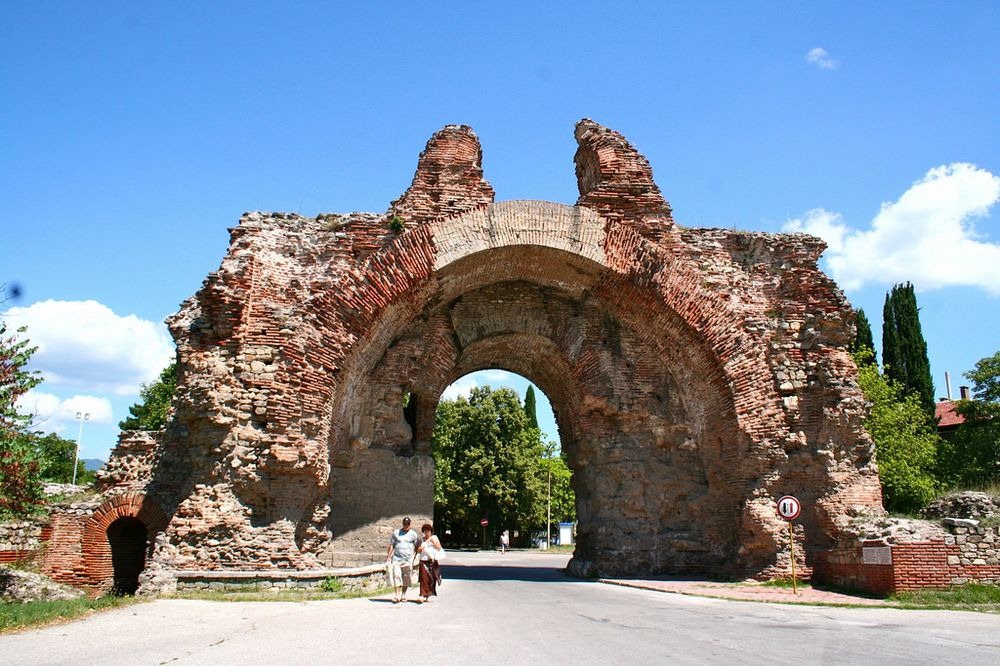Located on the outskirts of the Sredna Gora mountain range, about 40 km north of Plovdiv, in Central Bulgaria, lies the ancient town of Hisarya, famous for its nearly two dozen mineral springs. This small wonder of nature has been attracting people since the prehistoric times, with traces of settlement here that dates back to at least the 4th century BC. It’s the healing waters of Hisarya’s springs and its pleasant climate that brought the Romans to this place in 46 AD. The Romans overthrew the Thracians and Hisarya became a Roman town.
Not much happened for the next two hundred and fifty years, until Emperor Diocletian decided to promote Hisarya to the status of a Roman city, and renamed it Diocletianopolis. At once, there were constructions all over Hisarya as the small town tried to adapt itself to the prestigious role. Buildings and bath house were built, and streets were laid, but the most striking construction to take place were the massive fortification walls around the city.

The southern gate of Hisarya’s Roman walls. Photo credit: Ramon/Flickr
The walls have a total length of 2.3 km, and they completely enclose the old city where most of the Roman structures reside. Aside from a few breaching at places, the walls are almost completely intact and is one of the best preserved castle walls from the period of Late Antiquity in the Balkans and in Europe.
The walls are up to 11 meters tall, and at the southern gates, it’s taller still, at 13 meters. Entrance to the city was guarded by four impressive gates. The southern gate is nicknamed “The Camels” because when the arch of the gate broke in the middle, it resembled two camels looking at each other, before it was partially repaired in the 20th century.
There are Roman ruins everywhere. Public buildings, small amphitheater, the barracks of the Roman garrison, the foundations of a couple of the oldest churches in Bulgaria, as well as the best-preserved Roman fortress in Bulgaria.
Under the Romans rule, Hisarya grew and by the early 4th century, with the advent of Christianity, it became an important center of this religion. By the 5th century, it was the third largest city in the province after Plovdiv and Stara Zagora.
After the fall of Roman Empire, the prosperous city declined and turned into a small village with just a few inhabited houses. It was in these, Turkish times, when Hisarya got its present name which in Turkish means "castle".
After the liberation of Bulgaria in 1878, Hisarya became prosperous once again when the mineral springs were re-discovered and the place became a popular recreation spot. Today, it is one of best known spa town in Bulgaria.
The southern gate before repairs. Photo credit: Bulgarian Archives State Agency/Wikimedia
Photo credit: www.vacacionesbulgaria.com
Photo credit: Vladi Stoichkov/Wikimedia
Photo credit: Vassia Atanassova/Wikimedia
Photo credit: Ramon/Flickr
Photo credit: Иван/Wikimedia
Sources: Wikipedia / Wondermondo / bulgariatravel.org


















Comments
Post a Comment